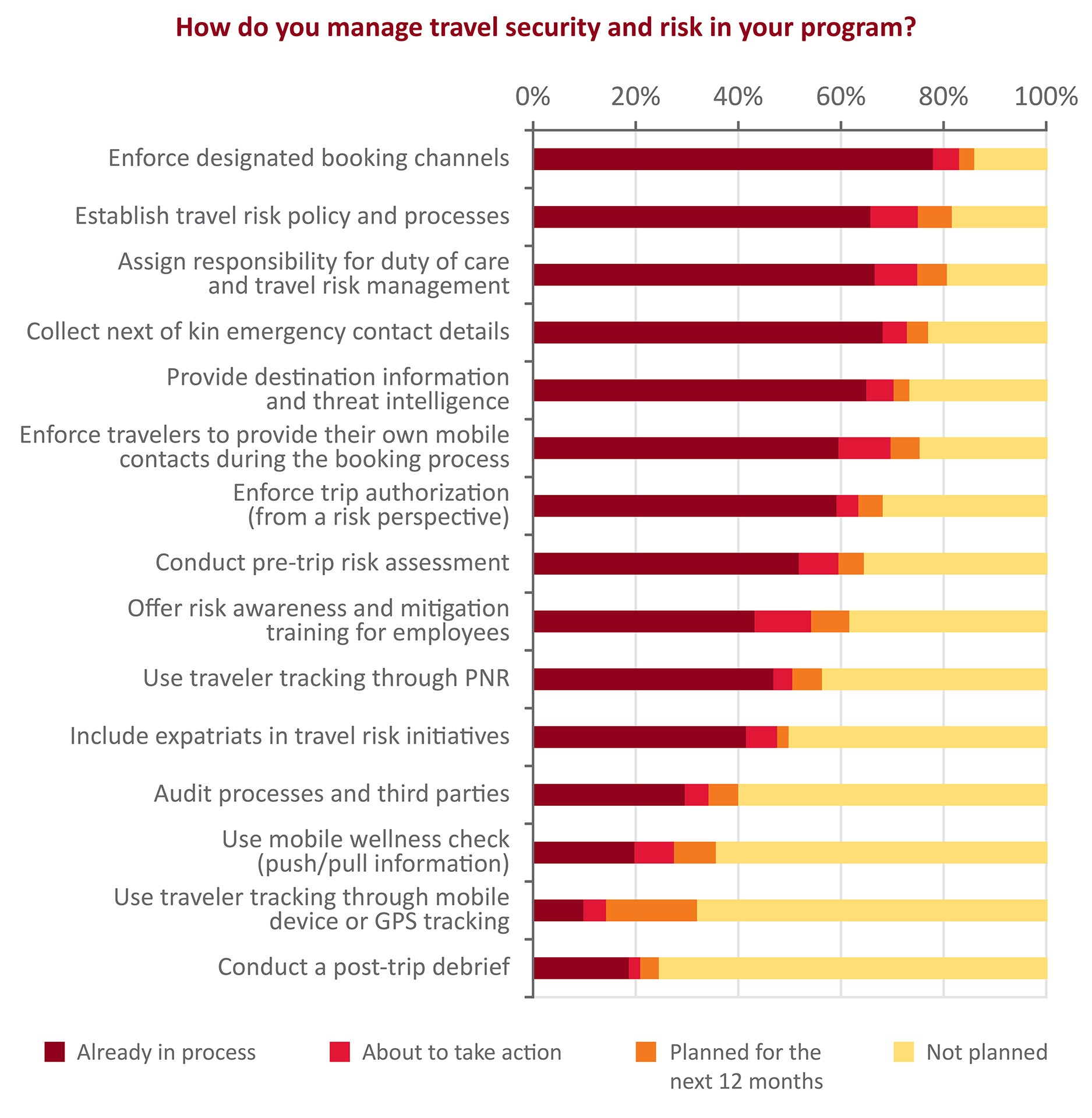Readiness increases, but risk management plans remain incomplete
The events of 9/11 became a catalyst for many companies to introduce standard travel risk procedures. Today, those procedures—aided by technology—have evolved into strategic and lifesaving strategies, such as systematic traveler tracking.
Since 9/11, incidents from the Icelandic volcanic ash cloud to the Malaysian Airlines disasters and the recent attacks in Paris have reminded companies of the need to prepare for the worst. But what does being ready mean?
BCD Travel asked that question in a recent survey of 510 travel managers and found some surprising answers. About two-thirds say their companies have established travel risk policies and processes, but fewer than half train employees on recognizing and mitigating risk. So, while companies have taken steps to manage travel risk over the last 14 years, there’s still significant room for improvement. See other findings below.
Find out more about how to create a strong travel risk management program. Talk to your account manager and check out BCD Travel’s latest paper, Travel Risk Management: Keeping Business Travelers Safe and Secure.
What’s the most important aspect of corporate travel risk management? Share your comments with other Move readers.


